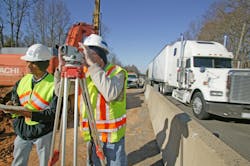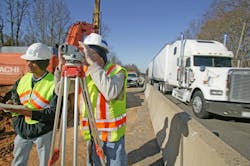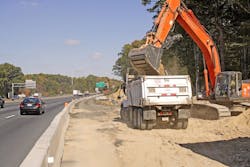Since 1999, the Federal Highway Administration (FHWA) has worked with the American Association of State Highway and Transportation Officials (AASHTO) and the American Traffic Safety Services Association (ATSSA) to coordinate and sponsor this annual event – along with an ever-growing list of private industry partners – to raise the safety consciousness of the motoring public where highway work zones are concerned.
Indeed, just by looking at the numbers, this yearly NWZA effort seems to be working. For example, work zone fatalities dropped in every year between 2002 and 2009 – falling by more than 7% from 720 in 2008 to 667 in 2009 – with overall work zone fatalities and injuries combined plummeting by 35% since 2000, according to FHWA data.
Yet raising “work zone awareness” not just about trying to improve safety for highway workers, as FHWA pointed out that more than four of every five victims in a work zone crash are motorists themselves – which is why it is particularly important for drivers of every vehicle, be it a car or big rig, needs to remain alert while driving through work zones.
[The video below created for last year’s NWZA outreach efforts in Pennsylvania further illuminates the issue of highway work zone safety.]
Bob Kreuzer, second VP for Travelers Construction Risk Control, shared some thoughts with me on this subject specifically aimed at fleets – noting that the key to safely navigating such roadway work is mainly about staying focused on the “fundamentals,” especially where “signage” is concerned.
“The signage a driver experiences before entering a work zone in the advanced warning area can influence their movement through the work zone – for just as billboards alert drivers to restaurants and attractions further down the road, so does the signage for potential hazards created by upcoming work zones,” he explained.
Warning signs vary, as almost any truck driver knows, but most commonly include the following:
- Diamond-shaped orange warning signs, which are posted in advance of road construction projects
- A “flagger ahead” warning sign, which is posted within the work zone
- Flashing arrow panels or “lane closed ahead” signs
He added that this is a time when big rig operators need to truly drive “defensively” and be on the lookout for more aggressive drivers who may not signal before switching lanes.
“Allowing space for someone to merge in front of you doesn’t appreciably slow down your trip, and it may prevent a collision,” Kruezer stressed.
Upon entering a work zone, drivers should proceed with extreme caution, he pointed out. “Warning signs and barriers are meant to direct you, but cones and barrels ultimately provide little protection for workers,” Kruezer said. “Keep a look out for workers or vehicles that are close to the lane of traffic and may accidentally stray into your path.”
It is also important to note that some work zones, including those for line painting, road patching and mowing, move down the road as the work is finished. In these instances, drivers should carefully observe posted work zone signs until they see one that specifically states they have exited the work zone area, he emphasized.Truck drivers should also ensure they keep a safe distance between their vehicle and traffic barriers, work trucks, construction equipment and workers.
“The most common crash in a highway work zone is the rear-end collision, so operators should remember to leave enough braking distance between their vehicle and the car in front of them,” Kruezer explained, pointing out that the National Safety Council recommends a three second following distance for light vehicles, and six seconds for heavy vehicles like commercial trucks.
“It is also important to be aware of individuals operating within work zones,” he stressed. “Such workers typically wear bright colors during the day and retro-reflective gear when working in the dark, so fleet operators should keep an eye out for these individuals and keep a safe distance from them when passing through.”
Yet making the biggest difference when it comes to highway work zone safety may actually happen before a tractor-trailer ever hits the pavement.
“Prior to departing, fleets and their drivers should plan the route of their trip accordingly,” Kruezer noted. “As many highway agencies inform motorists about the location and duration of major work zones, either through online notices, phone calls or other communicative means, it is advised that fleet owners and operators do a bit of research in advance to make sure highway or road construction sites do not interfere with their travel plans.”
He added – as every fleet knows – that highway agencies will often suggest a detour to help motorists avoid the work zone entirely.
“Use this information wisely,” he said. “Also, if running into a construction zone has unexpectedly slowed you down and may make you late for an appointment, don’t start making phone calls inside the work zone; this is a place where you want your full attention on your driving. Wait until you are out and parked somewhere safe to make that call.”
Good advice for when the orange cones start to sprout up along the roadways.



